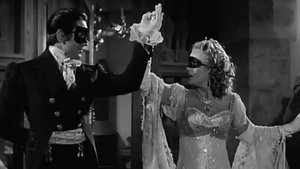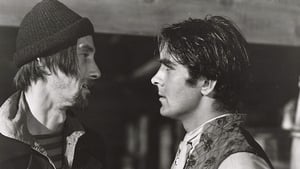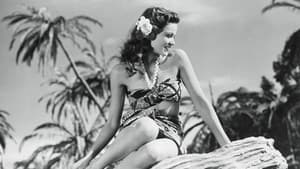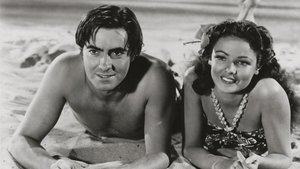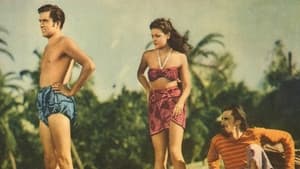Video Sources 0 Views
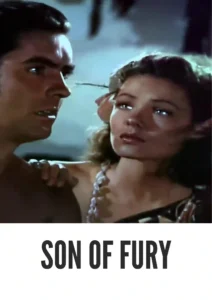
Synopsis
Son of Fury The Story of Benjamin Blake 1942 Colorized Review: A Swashbuckling Adventure in Color

Introduction
Son of Fury: The Story of Benjamin Blake (1942) is a classic adventure film that exemplifies the escapist cinema of the 1940s. Directed by John Cromwell and starring Tyrone Power in the lead role, this film is a swashbuckling tale of revenge, love, and redemption. Set in 18th-century England and the exotic South Seas, Son of Fury is a cinematic adaptation of Edison Marshall’s novel Benjamin Blake. Originally released in black and white, the film has since been colorized, offering audiences a fresh perspective on its stunning visuals and dramatic action sequences.
This review explores the significance of the colorized version of Son of Fury: The Story of Benjamin Blake, examining how the addition of color enhances the film’s visual appeal while discussing its historical and thematic importance. We will also delve into the film’s plot, characters, and legacy, as well as the ongoing debate surrounding the colorization of black-and-white classics.
Check The Full Colorized Movies List
Check Our Colorized Movies Trailer Channel
Understanding Son of Fury The Story of Benjamin Blake 1942 Colorized: Director, Cast, and Genre
Director’s Vision
John Cromwell, a prolific director known for his ability to balance intimate drama with sweeping action, helmed Son of Fury with a keen eye for both character development and visual grandeur. Cromwell’s direction in this film is a testament to his versatility. He captures the emotional core of the story while presenting a vibrant, adventurous world filled with intrigue and danger. His approach to the film’s pacing and tone allows the audience to become fully immersed in the life of the protagonist, Benjamin Blake, as he embarks on a journey of discovery and revenge.
Cromwell was a master of working with actors, drawing compelling performances from his cast, and Son of Fury is no exception. His attention to detail and ability to handle large, action-packed set pieces, alongside tender moments of character introspection, makes the film an enduring example of adventure filmmaking from the 1940s.
The Iconic Performance of Actors
The cast of Son of Fury is led by the dashing Tyrone Power, one of the era’s biggest stars, who brings charm, intensity, and vulnerability to the role of Benjamin Blake. Power’s performance is the heart of the film, and he carries the narrative with ease, portraying the emotional arc of a man wronged, seeking justice and identity. His physicality, especially in the film’s action sequences, is a highlight, and his chemistry with the rest of the cast makes the story even more engaging.
Gene Tierney stars as Eve, the beautiful and exotic love interest that Benjamin encounters during his time in the South Seas. Tierney’s portrayal of Eve is captivating; she brings both grace and strength to the character, making her more than just a passive love interest. Instead, she plays a crucial role in Benjamin’s journey of self-discovery.
Supporting performances by George Sanders, as the cruel Sir Arthur Blake, and Frances Farmer, as Isabel, add complexity to the story. Sanders is masterful in his portrayal of the aristocratic villain, a man driven by greed and power, while Farmer offers a sympathetic and nuanced performance as Isabel, who is caught in the middle of the Blake family feud.
Exploring the Genre
Son of Fury fits within the swashbuckling adventure genre, a popular category during the 1930s and 1940s, characterized by tales of daring exploits, historical settings, and heroic protagonists. This film stands out for its combination of personal drama, action, and romantic escapism. Unlike many swashbucklers that take place entirely in European courts or on pirate ships, Son of Fury moves between the rigid class structures of England and the lush, untamed landscapes of the South Seas, offering a dynamic setting for the story’s unfolding drama.
Exploring the World of Son of Fury The Story of Benjamin Blake 1942 Colorized: Plot and Characters
Detailed Synopsis
Son of Fury: The Story of Benjamin Blake begins in 18th-century England, where young Benjamin Blake (Tyrone Power) is revealed to be the illegitimate son of the deceased Lord Blake. Raised by his kindly grandfather, Benjamin learns of his true parentage and his right to the Blake estate. However, his aristocratic uncle, Sir Arthur Blake (George Sanders), denies him his inheritance and sends him into servitude.
Driven by a desire for justice and revenge, Benjamin escapes from his life of oppression and sets off for the South Seas. There, he becomes a pearl diver and begins to amass his own fortune. While in the South Seas, Benjamin meets and falls in love with Eve (Gene Tierney), a beautiful islander who helps him heal from the wounds of his past.
After gaining wealth and confidence, Benjamin returns to England to reclaim his rightful inheritance and confront Sir Arthur. The film culminates in a dramatic showdown between the two men, with themes of identity, honor, and retribution taking center stage.
The supporting characters, including Isabel (Frances Farmer), who harbors feelings for Benjamin, and Caleb Green (John Carradine), a loyal servant who helps Benjamin on his journey, add depth to the narrative. These characters serve as both allies and obstacles in Benjamin’s quest for justice, creating a rich tapestry of interpersonal dynamics.
The Art of Film Colorization
Understanding the Process
The colorization of films is a complex process that involves transforming the original black-and-white footage into a colorized version, often frame by frame. In the case of Son of Fury (1942), colorization enhances the film’s exotic settings, particularly the scenes set in the lush South Seas, bringing to life the vivid beauty of the islands and the sparkling ocean waters.
In the early days of cinema, films were often hand-painted or tinted to add color, but modern colorization uses digital technology to create a more seamless and realistic appearance. This process can be meticulous, especially when dealing with films that rely on mood and atmosphere, as is the case with Son of Fury.
Colorization is often controversial, but when done with respect for the original film, it can offer a new way for audiences to experience classic cinema, making it more visually engaging for contemporary viewers.
Development Over Time
Colorization technology has come a long way since its early inception. Initially, colorization was met with skepticism, as many believed it detracted from the original artistic intent of black-and-white films. However, advancements in technology have made the process more refined, allowing filmmakers and studios to enhance older films while staying true to the original vision.
Early Colored Films: A Brief History
Emergence of Early Colored Techniques
Color in cinema began as a novelty, with filmmakers experimenting with hand-painting frames or using processes like tinting and toning to give films a splash of color. These early techniques were labor-intensive and often imprecise, but they added a new dimension to storytelling, offering audiences a more immersive experience.
In the 1930s, Technicolor emerged as the dominant color process, revolutionizing filmmaking with its vibrant hues and rich saturation. Films like The Adventures of Robin Hood (1938) and The Wizard of Oz (1939) showcased the full potential of color cinema, setting the stage for future advancements.
By the time Son of Fury was made in 1942, black-and-white films were still the norm, though Technicolor productions were becoming increasingly common. The decision to colorize Son of Fury decades later brings the film closer in line with the swashbuckling tradition of bold, colorful imagery that characterizes much of the genre.
Son of Fury 1942 and Its Early Colored Version
The Decision to Release in Color
The colorization of Son of Fury was undertaken to revitalize the film for modern audiences. Adventure films, particularly those set in exotic locales, benefit greatly from the addition of color, as it enhances the visual spectacle. The vibrant hues of the South Seas, the deep greens of the jungle, and the rich textures of the pearls all come to life in the colorized version, providing a more immersive experience for the viewer.
The decision to release a colorized version was also likely motivated by the desire to reintroduce classic films to a new generation. The swashbuckling genre is built on dynamic visuals, and color helps emphasize the grandeur and drama of the film’s settings and action sequences.
Impact on the Visual Narrative
The colorized version of Son of Fury transforms the visual narrative, particularly in scenes set in the South Seas. The contrast between the dreary, oppressive atmosphere of 18th-century England and the vibrant, sun-soaked landscapes of the islands is made more pronounced through the use of color. The exotic settings become more vivid, heightening the sense of adventure and escape that the film aims to convey.
While the original black-and-white version of Son of Fury relied on light and shadow to create mood and atmosphere, the colorized version adds a new layer of depth to the film’s visual storytelling. The rich colors enhance the emotional tone of the story, making the romantic and action-packed scenes even more impactful.
The Debate Over Film Colorization
Controversy Surrounding Colorization
As with many colorized films, Son of Fury has sparked debate over whether the process enhances or detracts from the original work. Critics argue that colorization can strip away the artistic intent of the original filmmakers, who often used black-and-white to create specific moods or highlight thematic elements.
In the case of Son of Fury, some purists may argue that the black-and-white format is more fitting for the film’s period setting and dramatic narrative. However, proponents of colorization believe that adding color can make classic films more accessible to modern audiences, who may be less inclined to watch black-and-white films.
Examining Son of Fury 1942 as an Early Colored Film
Enhancement or Distraction?
The colorization of Son of Fury undeniably enhances the film’s exotic locations and action sequences, but some may feel that the addition of color distracts from the film’s more intimate, character-driven moments. While the vibrant hues of the South Seas add to the film’s sense of adventure, the stark contrast between the English scenes and the island scenes is somewhat diminished in the colorized version.
Ultimately, whether colorization enhances or detracts from the viewing experience is a matter of personal preference. For those who appreciate the visual spectacle of adventure films, the colorized version of Son of Fury offers a new way to experience the story. However, for fans of classic cinema, the original black-and-white version may hold a special appeal.
Influence and Legacy: Son of Fury The Story of Benjamin Blake 1942 Colorized’s Impact on Cinema
Influence on Swashbuckling Films
Son of Fury was part of a long tradition of swashbuckling films that captivated audiences with tales of adventure, romance, and danger. The film’s success helped solidify Tyrone Power as a leading man in Hollywood, and his portrayal of Benjamin Blake influenced future action heroes in cinema.
The film also contributed to the popularity of adventure films set in exotic locales, paving the way for later swashbuckling epics like The Sea Hawk (1940) and Captain Blood (1935), both of which featured similar themes of revenge, justice, and personal redemption.
Director’s Cinematic Legacy: Beyond Son of Fury The Story of Benjamin Blake 1942 Colorized
John Cromwell’s work on Son of Fury is just one example of his impressive directorial career, which spanned multiple genres, from drama to romance to adventure. His ability to balance character-driven narratives with larger-than-life action sequences made him a sought-after director in Hollywood during the 1930s and 1940s.
Cromwell’s influence can be seen in the work of future filmmakers, particularly those who sought to blend intimate storytelling with grand cinematic spectacle. His legacy is one of versatility and innovation, and Son of Fury remains one of his most memorable films.
Themes Explored in Son of Fury The Story of Benjamin Blake 1942 Colorized
Darkness, Violence, and Morality
At its core, Son of Fury is a story about identity, revenge, and redemption. The film explores the darkness within human nature, particularly through the character of Sir Arthur Blake, whose greed and cruelty drive much of the plot. The themes of violence and morality are also central to the film, as Benjamin Blake grapples with the desire for revenge and the need to remain true to his own moral compass.
The film’s exotic setting serves as a backdrop for these larger themes, with the wild, untamed nature of the South Seas mirroring Benjamin’s internal struggle for freedom and justice. The contrast between the rigid, oppressive society of England and the free, open landscape of the islands further emphasizes the film’s exploration of personal liberation and self-discovery.
Reception and Controversy Surrounding Son of Fury The Story of Benjamin Blake 1942 Colorized
Initial Reviews and Audience Reactions
Upon its release, Son of Fury received generally positive reviews from critics, who praised Tyrone Power’s performance and the film’s thrilling action sequences. Audiences were drawn to the film’s exotic locations and romantic storyline, making it a box office success.
The subsequent colorization of the film, however, has divided critics and audiences. While some appreciate the visual enhancements that colorization brings, others feel that the original black-and-white version better captures the film’s period setting and dramatic tone.
Where to Watch Son of Fury The Story of Benjamin Blake 1942 Colorized Online
For those interested in watching Son of Fury: The Story of Benjamin Blake, the film is available on various streaming platforms, including Amazon Prime Video and Turner Classic Movies. Both the original black-and-white version and the colorized edition can be found online, giving viewers the option to choose their preferred viewing experience.
FAQs About Son of Fury The Story of Benjamin Blake 1942 Colorized
Q: What is the significance of the colorized version of Son of Fury?
A: The colorized version offers a visually enhanced experience, particularly in scenes set in the South Seas, while also sparking debate about the merits of colorizing classic black-and-white films.
Q: Who stars in Son of Fury?
A: The film stars Tyrone Power as Benjamin Blake, with Gene Tierney, George Sanders, and Frances Farmer in supporting roles.
Q: What are the main themes of the film?
A: The film explores themes of revenge, identity, morality, and personal redemption, set against the backdrop of 18th-century England and the exotic South Seas.
Q: How has Son of Fury influenced the adventure genre?
A: The film is part of a long tradition of swashbuckling adventure films and helped solidify the popularity of the genre in Hollywood.
Conclusion
Son of Fury: The Story of Benjamin Blake (1942) is a classic adventure film that continues to captivate audiences with its thrilling tale of revenge, romance, and redemption. The colorized version offers a fresh perspective on the film’s stunning visuals, while the original black-and-white format remains a testament to John Cromwell’s directorial skill and Tyrone Power’s star power. Whether viewed in its original form or in color, Son of Fury stands as a timeless example of swashbuckling cinema at its finest.
